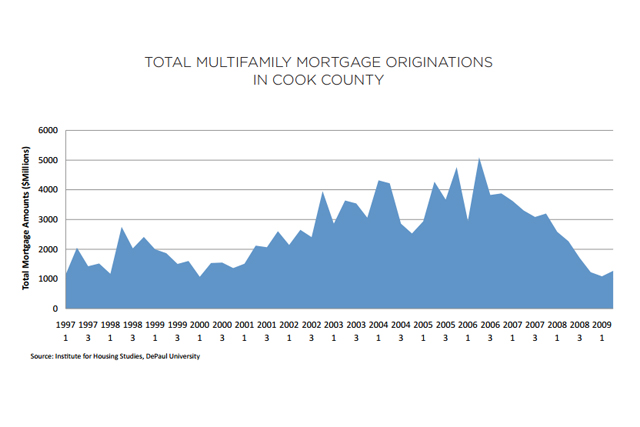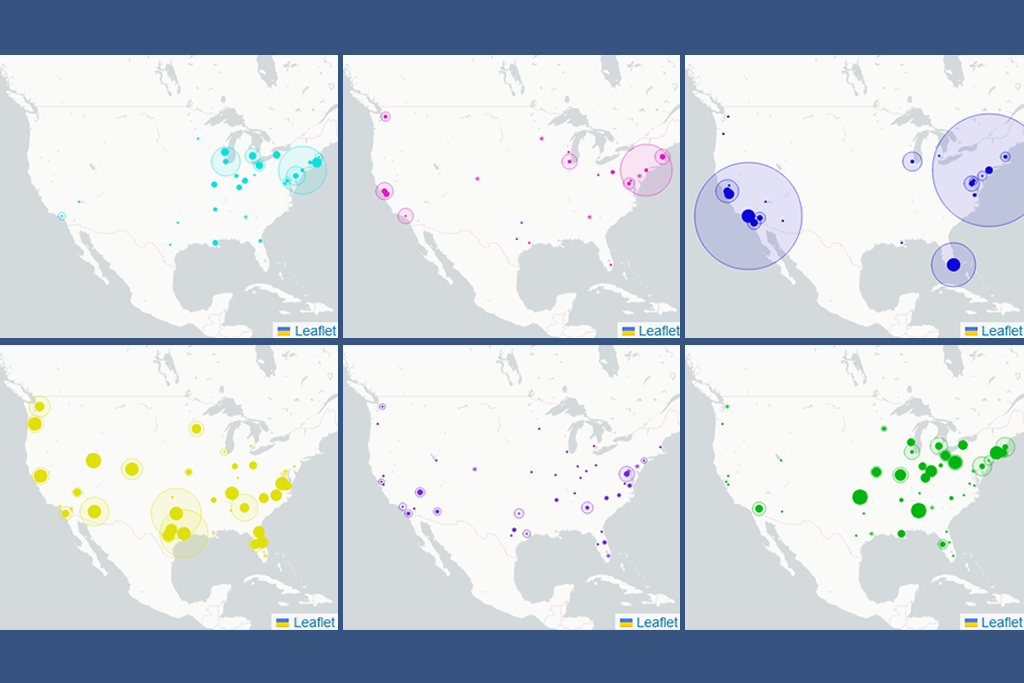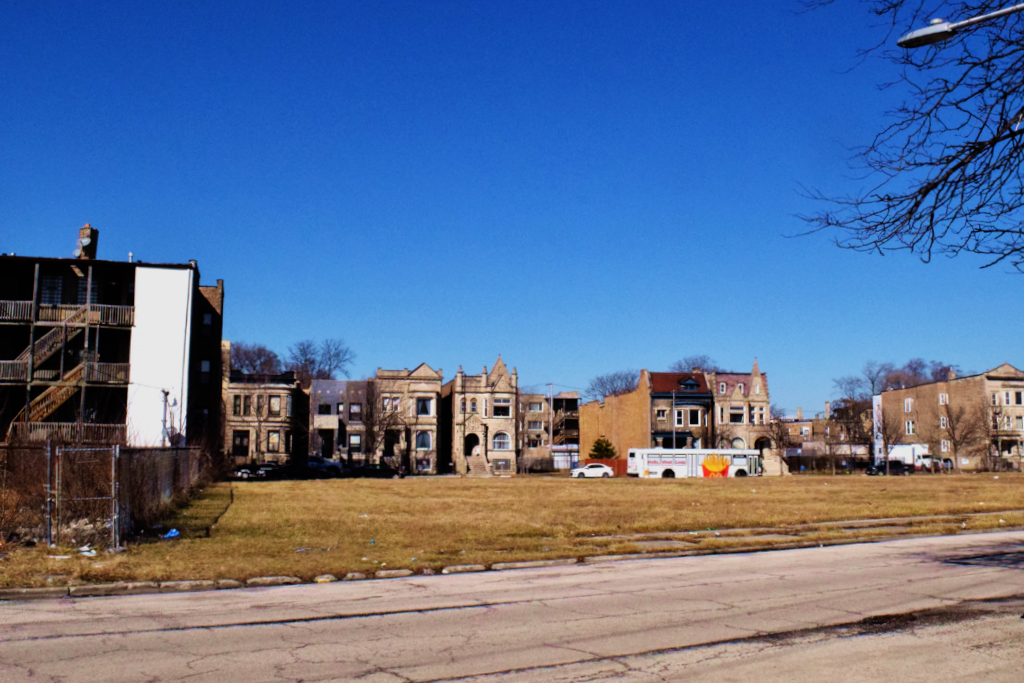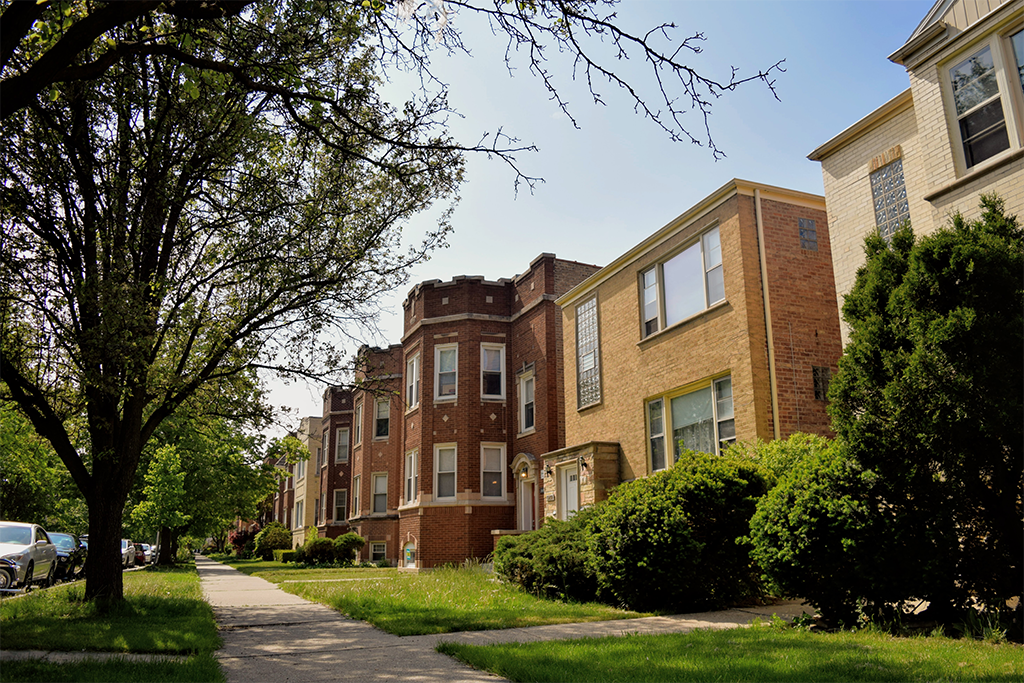This working paper and issue brief examines property price declines and foreclosure experience on multifamily mortgages in Cook County (Chicago) over the period 1998 to 2009.
SUMMARY OF KEY FINDINGS
- Prices of large (7+ unit) rental properties in Cook County have declined from an index value of 166 in the third quarter of 2006 to 123 in the second quarter of 2009, a decline of 26%. Prices of small (2–6 unit) rental properties in Cook County have fallen from an index value of 193 in the second quarter of 2007 to 104 in the second quarter of 2009, a decline of 46%.
- Falling property values in Cook County have put roughly $13 billion of multifamily mortgages (or approximately 30% of the total outstanding multifamily mortgage debt) at risk of default. Total value-at-risk for small 2–6 unit rental properties is $12.6 billion. For large 7+ unit rental properties, the total value-at-risk is $747 million.
- Falling property values have meant a rise in multifamily foreclosures. Foreclosures on both small (2–6 unit) and large (7+ unit) properties in Cook County have increased considerably in 2009. As a percent of outstanding loans, foreclosures on small (2–6 unit) properties are between 4 to 14%, depending on income submarket. Among large (7+ unit) properties, foreclosures are between 2 to 8% of outstanding loans in the same income submarkets. By loan cohort, foreclosures are led by loans originated between 2005 and 2007, a period of over-lending and over-spending.
- Multifamily foreclosures on both small 2–6 unit rental properties and large 7+ unit rental properties are estimated to have impacted more than 32,000 units in the Cook County rental market (as of year-end 2009). In contrast, there are currently about 38,000 single-family units in foreclosure in Cook County.
- Falling property values have forced many lenders to “pretend and extend.” Lenders have delayed foreclosures on about $1.5 billion of multifamily mortgage debt in Cook County.
- Price declines and deleveraging imply less multifamily mortgage lending in Cook County. Multifamily mortgage debt on small 2–6 unit rental properties in Cook County, on average, grew from $17.4 billion in 2004 to $28.8 billion in 2007, an increase of 66%. Debt on large 7+ unit properties also increased significantly over this same time period, from $5.4 billion in 2004 to $12.5 billion in 2007, an increase of 128%. However, new issuance of multifamily mortgage debt on small 2–6 unit properties in Cook County fell to $5 billion in 2008, down 39% from 2007, and fell even further in 2009. Similarly, the new issuance of multifamily mortgage debt on large 7+ unit properties in Cook County fell to $2.7 billion in 2008, down 45% from 2007, and fell again in 2009.
- As local lending institutions have scaled backed their lending to large 7+ unit properties in 2008 and 2009, Fannie Mae and Freddie Mac have essentially become indispensable to the Cook County multifamily mortgage market. The GSEs’ share of the large 7+ unit multifamily mortgage market in Cook County is around 65 to 70% of all lending. Fannie Mae and Freddie Mac are also indispensable to the small 2–6 unit multifamily mortgage market in Cook County, but for an altogether different reason.
- Disinvestment is occurring as rents and property values are declining. Net rental revenues are currently at or below total operating costs for about 74,000 rental units in the city of Chicago.
- Certain short-run policy prescriptions are clear from the analysis, including the need for Fannie Mae or Freddie Mac to provide continued liquidity and stability to the multifamily mortgage market in the immediate term.
- The analysis also sees an expanded lending role for FHA in the current environment. FHA multifamily lending has always featured financing for the purchase, construction, and substantial rehabilitation of rental properties, and a strong case can be made that, if any one thing is most needed in this environment, it is joint financing for the purchase and rehabilitation of rental properties.
- Long-run policy must necessarily take into account the extent to which Fannie Mae and Freddie Mac subsidize interest and create an incentive to take on excessive debt.






